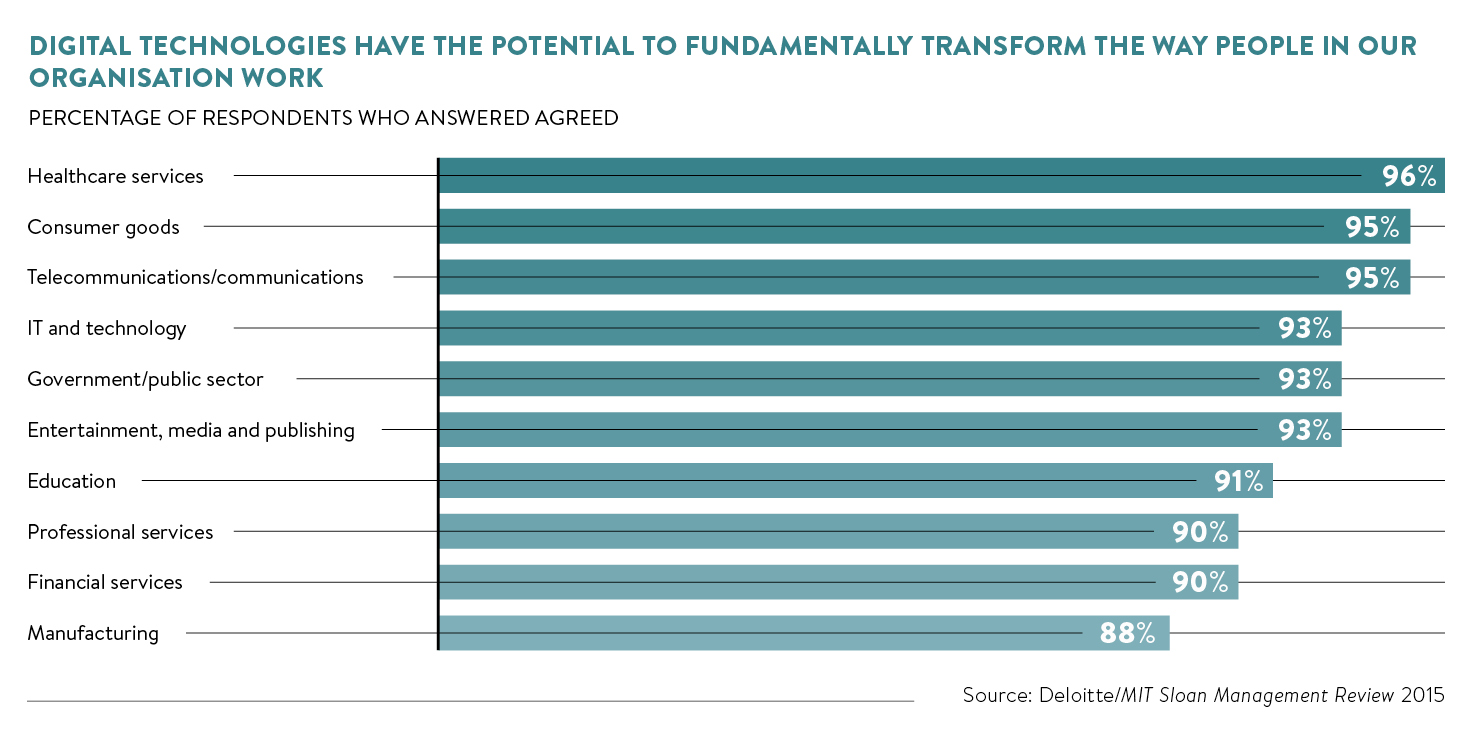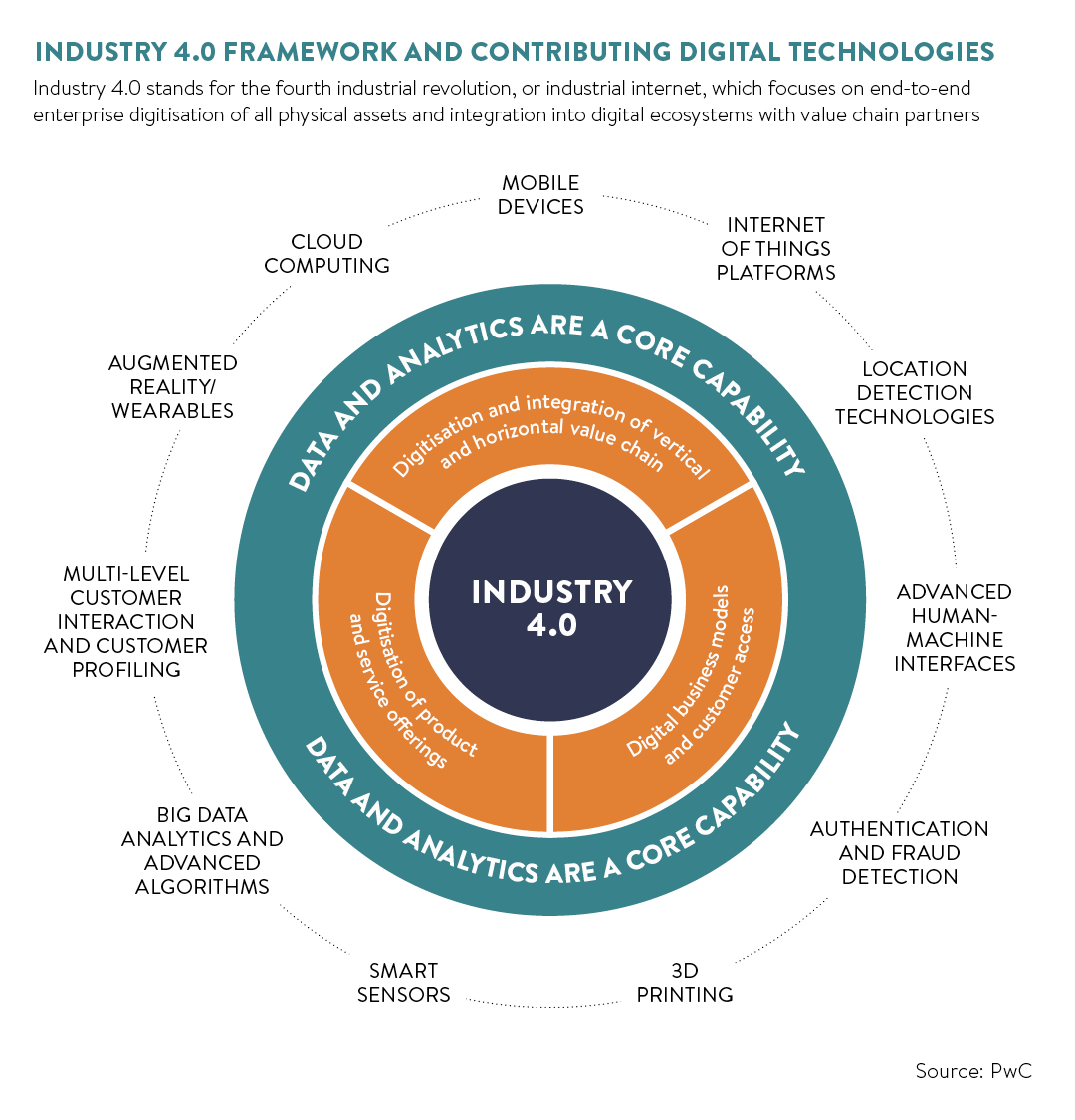Digital transformation: the process of getting an organisation fully ready to operate in our changing digital environment and preparing it for continuous change ahead.
Few terms in today’s business vernacular are met with as much confusion and apprehension. And it’s easy to understand why.
Why the apprehension?
Firstly, digital is daunting. The pace and scale of change we’ve seen over the last decade is both unprecedented and unrelenting. Regardless of your industry or your geography, no organisation can claim immunity from the disruptive nature of new digital and mobile technologies, and this level of change is only set to continue.
From how we shop to how we travel, how we choose where to eat and holiday to how we manage our health and finances, there are few aspects of our lives or society as a whole that have escaped the ubiquity of digital.
Digital transformation isn’t optional – it’s a strategic priority for any leadership team because the reality is this era of change isn’t going away, it’s accelerating
And it’s not just consumer industries witnessing this revolution. The use of cloud technologies, advanced analytics, new enterprise applications and digitisation are fundamentally reshaping industries as diverse as law, real estate, manufacturing, financial services and more.
Secondly, transformations are tough. They can be complex, costly, unsettling and are generally quite difficult feats to accomplish. When faced with hundreds or thousands of employees, legacy business models, established ways of working, existing products and services, and an organisational design from a past era, any executive can be forgiven for moments of anxiety.

The reality, however, is digital transformation isn’t optional – it’s a strategic priority for any leadership team because the reality is this era of change isn’t going away, it’s accelerating.
Consumers’ control of their interactions with brands and organisations will continue to grow, as will their expectations from those entities. Competitive forces will continue to intensify as new generations of talent and startups challenge accepted market dynamics and upend incumbent players. And technology will continue to evolve – consider that even in 2016 we’ve barely scratched the surface of technologies such as virtual and augmented reality, artificial intelligence, connected living, autonomous vehicles, smart homes, big data and robotics.
Beginning the digital transition
So where should you start? Before rushing headfirst into a digital transformation initiative, forming a project team or writing your plan, it’s essential to understand what your organisation and its leaders think a digital transformation might involve, and then working to align leaders around a common definition and focus.
Ask ten people in your organisation what digital means to them and you’re likely to get eleven answers. Unless you secure a shared understanding of what “being digital” means for your organisation and commitment to what a transformation will entail – resources, decisions and risks – you’re likely to experience tensions further down the line.

To start this sort of debate internally, it’s important to recognise that digital doesn’t respect functions, silos or hierarchies. Digital permeates throughout an organisation, so when defining what transformation means for you, this must be elevated from a single team or priority, starting with the question, “How do we transform our organisation from an organisation which does some digital things, into a truly digital organisation?”
Starting with this macro question will enable your organisation to explore digital priorities, risks, threats and opportunities across four core areas in which digital transformation manifests itself.
The first is operations and efficiency. This involves exploring how new technology applications, and the digitisation of processes and platforms can yield resource savings or reduce service times. Examples include replacing call centre operations with customer service through live chats and social media, or digitising invoicing and billing.
The second is business model innovation. This involves rethinking your entire way of doing business and exploring how digital technology can unlock new ways to create value and deliver growth. Contemporary examples include in-car black box devices to improve insurance risk profiling or using data from wearable technology in healthcare to identify new services and improve customer targeting.
The third is technology innovation. This involves exploring how new developments in digital can reduce costs, mitigate risk and improve integration across an organisation’s core technology systems. Examples include implementing cloud-based systems to enable greater workforce mobility and real-time information.
The fourth and final core area is customer experience and engagement. This requires a meaningful understanding of customer journeys and purchase behaviour, and identifying how and where digital can improve how customers experience your brand, either through simplifying key touchpoints or identifying new ways to add value and build greater engagement and affinity.
The right questions are the building blocks of a digital transformation. Knowing where your leaders are now, gaining consensus on the priorities for your organisation and securing collective agreement to what needs to change, in what order and the desired impact will move a digital transformation effort from an aspiration to a reality.
An aligned leadership team that all start from the same place and are committed to what digital transformation really means for your organisation will help smooth the already difficult path ahead.
Why the apprehension?

Beginning the digital transition

